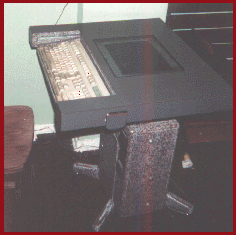
"What role does urban planning play in the development of online, multi-user environments and communities?"

AIMS AND OBJECTIVES OF THE ELECTRONICALLY MEDIATED URB PROJECT
The aim in developing the EMU project has been to investigate the processes required to enable a number of people to share a collaborative city like space for the purpose of creating a meaningful community. In an age of increased telecommunications, the contemporary experience is heavily mediated by electronics of an official, or commercial nature. Few opportunities arise which enable people to take part in electronic media forms which are free of commercial or governmental interests. The EMU project attempted to make use of available technologies and ideas to build a body of knowledge upon which more could be understood about the relationships between cities and online environments.
This research diary and notes site tells the story of the Electronically Mediated Urb project based at RMIT between 1994 and 2002. The Electronically Mediated Urb (henceforth EMU) seeks to answer the following question:
"What role does urban planning play in the development of online, multi-user environments and communities?"
Since 1994, the project has undergone a number of changes and resulted in many unforseen outcomes.
These include
a computer graphics version of the city for use with an interactive television broadcast,
a web grid project,
experiments with wearable computers and wireless video camera technology
a 35mm motion picture showing a future Melbourne
I will tell the story of EMU from the perspective of the events as they happened, and intersperse this account with related relevant anecdotes, ideas and facts which reinforce my main argument. Video clips of people I have met and interviewed pepper this project note document. There are interviews with wearable computing pioneer Thad Starner, Sociable Media programmer and researcher Karrie Karahalios, John Madea as well as clips of projects related to the EMU research.
I will seek to demonstrate that as technological means vary with time, the key organizational principle behind effective communications media lies in its ability to create the conditions for a community. Often these online or electronically mediated communities make strong use of the urban metaphor. Cities, and representations of cities, and the elements which go into city life and culture are to be found in the better examples of online media which seek to bring together people for the express purpose of building a community.
I will also seek to communicate the idea that the users of these environments benefit from the sense of being involved directly in the production of social space, and will show how my own research moved from an initial interest in the possibilities of interactive television, to World Wide Web based ways to experiment with online ‘urban’ communities. The research also encompassed the field of wearable computers, and ‘augmented reality’. An original short film which I wrote and directed; "Otherzone" (backed by Film Victoria) also served as a means to speculate on how technology in a future city of Melbourne might take shape. The technologies and urban spaces depicted in this film owed much to the research undertaken at RMIT into electronically mediated urban space.
This project is not about:
Being a hand-on technical guide on how to build an online city
The benefits of one type of online shared community over others